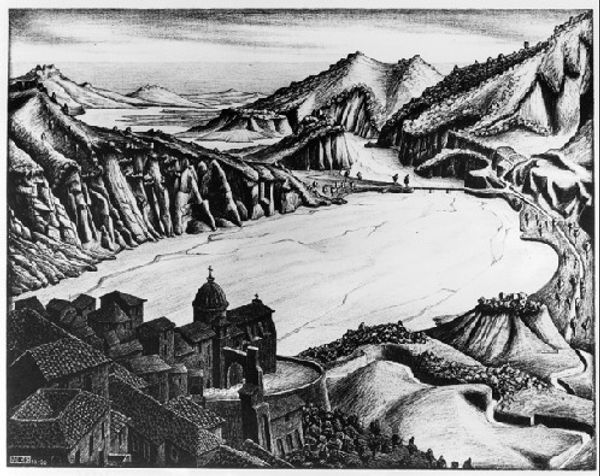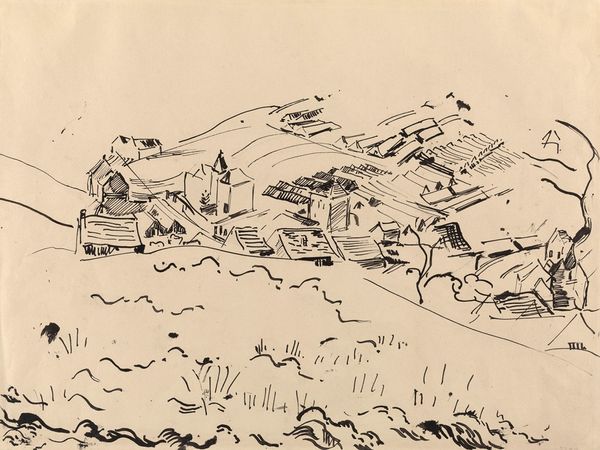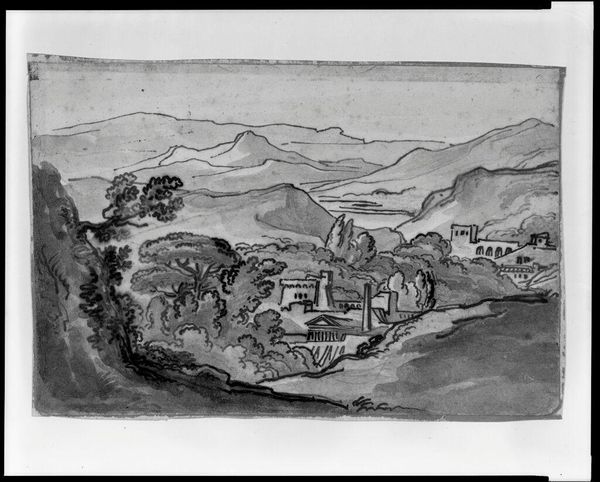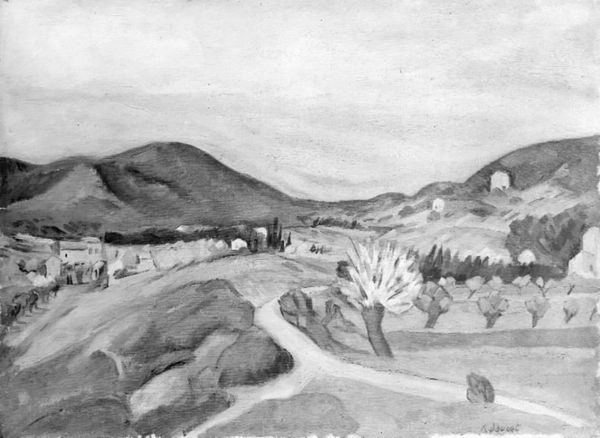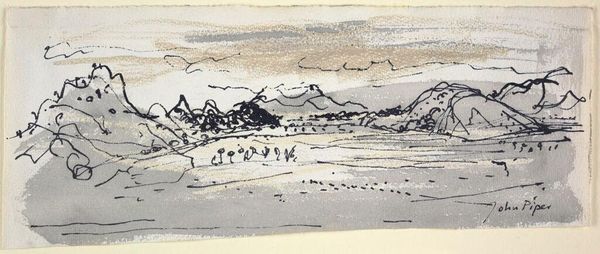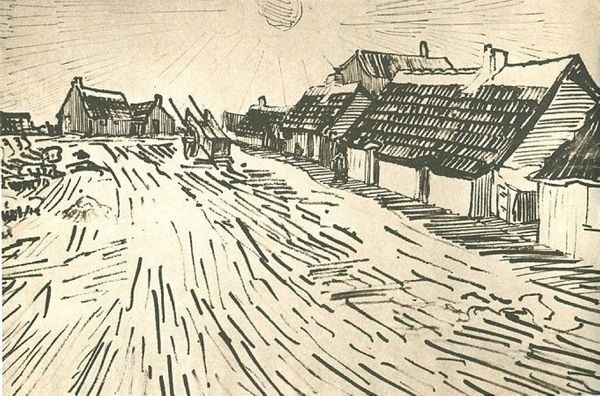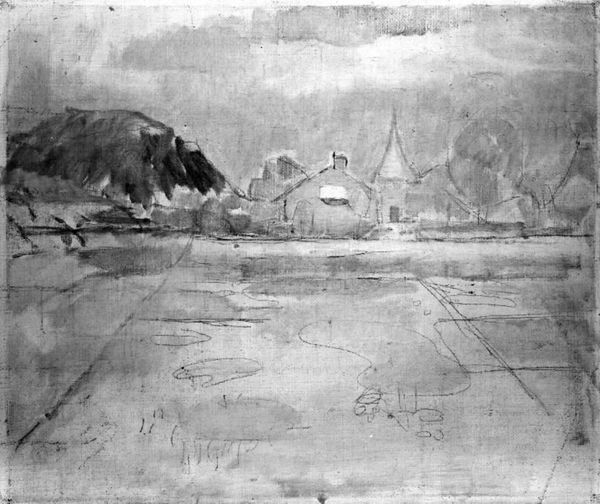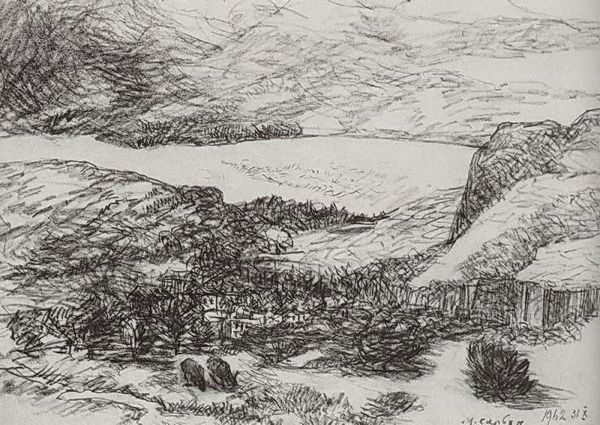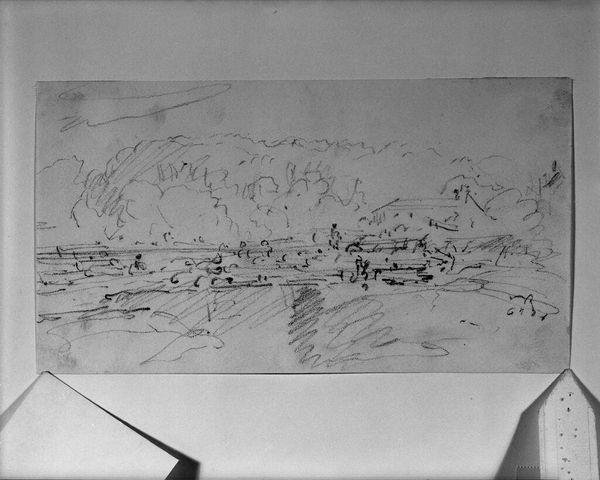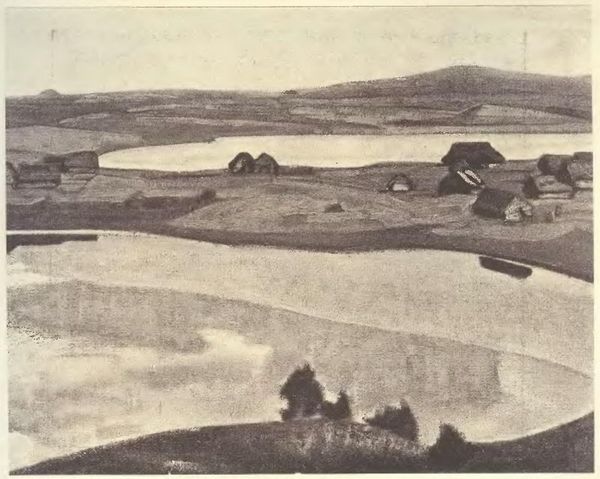
drawing, pencil, graphite, charcoal
#
drawing
#
pencil sketch
#
landscape
#
charcoal drawing
#
charcoal art
#
pencil
#
line
#
graphite
#
cityscape
#
charcoal
#
realism
Copyright: Medi Wechsler Dinu,Fair Use
Curator: This graphite and charcoal sketch is entitled “Untitled (Balchik)” by Medi Wechsler Dinu. The location given in the title immediately evokes the rich cultural tapestry of the Balkans. What strikes you about it initially? Editor: I am struck by a certain…melancholy. Despite the sunny locale implied by "Balchik", the monochrome medium lends a somber quality. There’s something unfinished about it, like a memory fading at the edges. Curator: Yes, the layering of graphite and charcoal certainly emphasizes this sense of the ephemeral. Balchik, as a port city on the Black Sea, holds a significant place in Romanian cultural memory. Queen Maria, a prominent figure of the early 20th century, built her palace there, creating a space of artistic and cultural exchange. Editor: So, it was a site of considerable privilege, then. That explains the rather idyllic feel of the cityscape; those red tile rooftops look Mediterranean. Did Wechsler Dinu intentionally engage with the location’s symbolism in relation to power structures? Or is it a more straightforward landscape study? Curator: It’s fascinating you should say that because while there are no easily recognizable markers to locate the artist definitively, landscape as a genre in and of itself has often functioned as a way of expressing territorial claims, national identity, and… nostalgia. Think about the tower; does its form suggest anything specific to you? It’s the architectural centerpiece of the landscape. Editor: It definitely grounds the scene. Considering the location and its history, a tower as the focal point reminds us of the layered history—and often conflicting identities—present in this region. It invites questions about who is looking, who is represented, and whose narratives dominate. What elements of the Romanian modernist milieu do you detect at play in it? Curator: Wechsler Dinu engages a simplified realism in this work, in keeping with modernist interest in flattening perspectival depth. Yet the piece doesn't fully commit; it’s as if memory and impression blend to produce this very personal cartography. Editor: Perhaps, instead of a political claim, this artwork is inviting us to see Balchik with empathy, considering its complicated history through its visual components of light, architecture, and sea. The tower silently persists. Curator: Indeed, the layers of mark-making parallel the layered history embedded in this seascape. It reveals a Balchik that's both observed and felt.
Comments
No comments
Be the first to comment and join the conversation on the ultimate creative platform.

